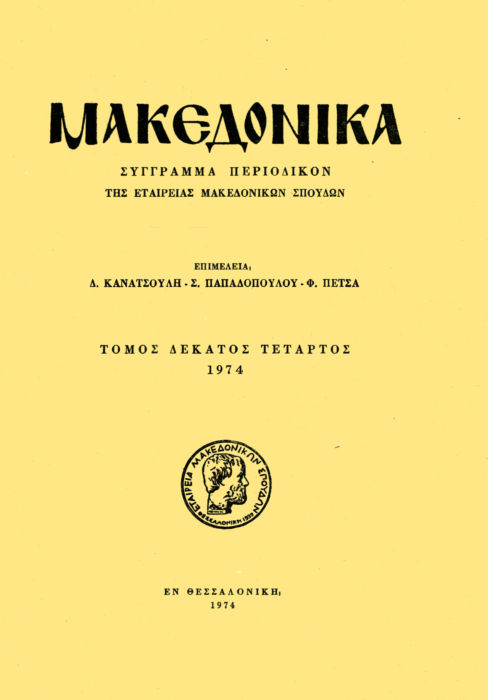The epigram from Edessa again
Abstract
It has been stated earlier31t2hat the Edessa tombstone is that of a young pig killed while being brought to Emathia. The pig is named, described and pictured—once while travelling and again while being run over. The epigram tells us a story, which exactly coincides with the illustration. The evidence for my interpretation is based on the obvious and it takes no flight of fancy to be substantiated.
Imaginative interpretations have been given by others 3, based on a possible meaning of one word or another. The fact that the one word can be interpreted in many ways proves that it is unsafe to take recourse solely in imagination (see p. 300).
Article Details
- How to Cite
-
Πέτσας Φ. Μ. (2015). The epigram from Edessa again. Makedonika, 10(1), 287–289. https://doi.org/10.12681/makedonika.774
- Issue
- Vol. 10
- Section
- Σύμμεικτα

This work is licensed under a Creative Commons Attribution-NonCommercial-ShareAlike 4.0 International License.
Authors who publish with this journal agree to the following terms:
- Authors retain copyright and grant the journal right of first publication with the work simultaneously licensed under a Creative Commons Attribution Non-Commercial License that allows others to share the work with an acknowledgement of the work's authorship and initial publication in this journal.
- Authors are able to enter into separate, additional contractual arrangements for the non-exclusive distribution of the journal's published version of the work (e.g. post it to an institutional repository or publish it in a book), with an acknowledgement of its initial publication in this journal.
- Authors are permitted and encouraged to post their work online (preferably in institutional repositories or on their website) prior to and during the submission process, as it can lead to productive exchanges, as well as earlier and greater citation of published work (See The Effect of Open Access).








